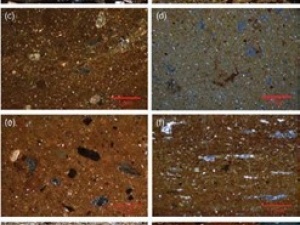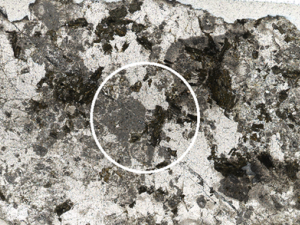Analysis of Physical and Chemical Characteristics of Anthrosols—The Case of Former Bremen Missionary’s Settlement in Ghana
Abstract
Past settlement sites often relate to the accumulation of elements in Anthrosols. The analyses of Anthrosols can resolve specific queries on the estimation of element enrichment factors and their potential suitability for arable fields. We studied Anthrosols in the sub-Sahara developed on a mid-19th century AD Bremen missionary settlement in the Volta Region, Ghana, aiming to compare the physicochemical properties with control soil unaffected by past settlement activities. The black colour of the Anthrosols contrasted with the brown Acrisols of the control on the same bedrock. The pH, contents of organic C, total (N, P, Ca, K, Mg, Mn, Fe, Cu, Zn and Sr) and plant-available Mehlich-3 (P, Ca, K, S and Mg) elements substantially increased in the 0–85 cm depths of the Anthrosols compared with the control. The Anthrosols are thus suitable for arable land-use. Total K, Cu, Mn, Zn, Sr, Ca, Mg and Fe well indicated past settlement activities according to their significant correlations with P. Total and plant-available P and K content of each element significantly correlated and vice versa for Ca and Mg. However, in calculating the enrichment factors in the field for geoarchaeological purposes, we confirmed that total element contents are more suitable. The substantial enrichment by plant-available elements implied that mineral fertilizer applications on arable fields on previous settlements should not be the same as fields without settlement activities. Past settlement sites represent a storehouse of nutrient-rich Anthrosols in cultural landscapes traceable through detailed multi-element analysis.
Full open access article:
Source: Preview Image: Holger Mette/iStockphoto






